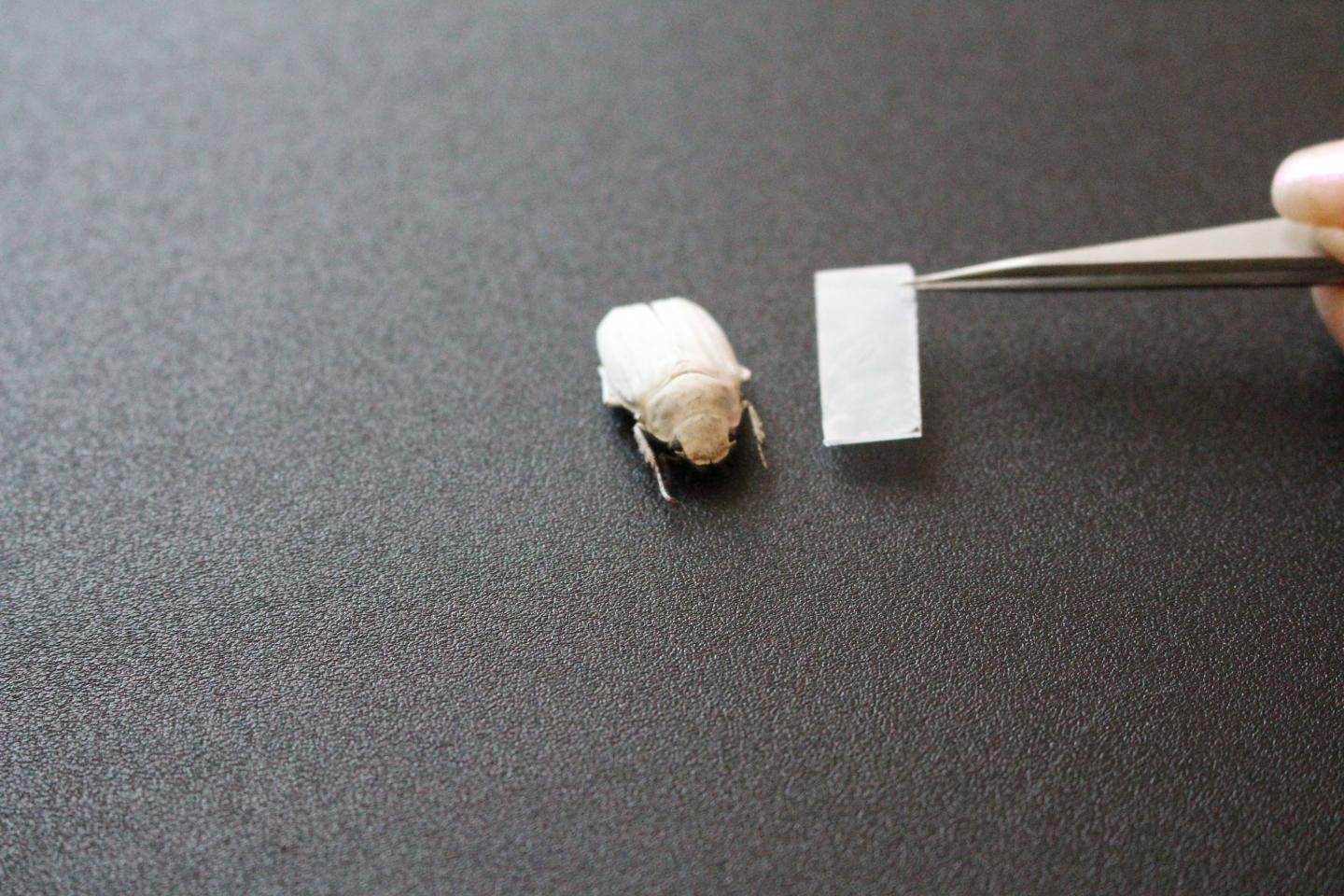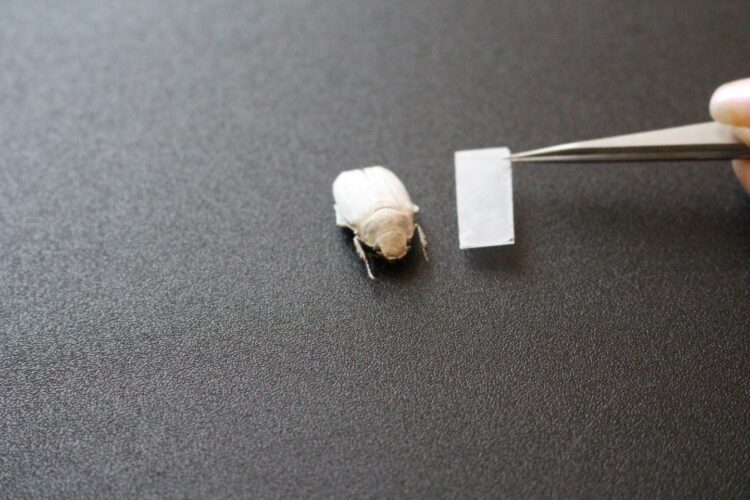Nanostructured polymer foil appears white without environmentally hazardous titanium dioxide — Beetle’s chitin scales used as a model

Credit: Julia Syurik, KIT
Polymer foils that are extremely thin and characterized by a high light scattering rate are produced by a new process developed by Karlsruhe Institute of Technology (KIT). The inexpensive material may be applied industrially to various objects to give them an attractive white appearance. Moreover, the process can make products environmentally more compatible.
A brilliant white surface makes furniture and other objects appear clean, bright, and modern. So far, titanium dioxide has been the standard pigment used for white coloring of lacquers, paints, and plastics as well as of cosmetics, foods, chewing gum, or pills. However, the pigment is in the focus of criticism. “Titanium dioxide has a very high refractive index, it reflects incident light almost completely. But it is associated with the drawback that its particles do not degrade and thus pollute the environment in the long term,” says Professor Hendrik Hölscher of KIT’s Institute of Microstructure Technology (IMT). In addition, there have been concerns that titanium dioxide could be harmful to health.
“We avoid the use of pigments that are harmful to health and the environment by producing porous polymer structures of comparably high scattering efficiency,” Hölscher says. He and his team were inspired by the white beetle Cyphochilus insulanus, whose chitin scales appear white thanks to their special nanostructure. “Based on this model, we produce polymer-based solid, porous nanostructures, which resemble a sponge,” says Hölscher, who heads the Biomimetic Surfaces Group of IMT. Similar to the bubbles of shaving or bathing foam, the structure scatters light, which makes the material appear white. The new technology for low-cost and environmentally compatible white optics is suited for various surfaces.
Environmentally Compatible Materials – Modeled on Nature
“The polymer foils produced by our process are extremely thin, flexible, and of low weight, but still mechanically stable and can be applied industrially to a variety of products,” the physicist explains. At a thickness of 9 μm – nine thousandths of a millimeter – the newly developed polymer foil reflects more than 57% of the incident light. 80 to 90% can be achieved when increasing the thickness of the foil. In the course of the development work, the sponge-like microstructure was applied to acryl glass. However, the process may be transferred to many other polymers. “Apart from foils, entire objects may be colored white. As a next step, we plan to produce particles, e.g. small beads that are added to other materials,” Hölscher says. “We have already received several inquiries from companies that want to make their products environmentally more compatible.” While engineers frequently develop solutions based on materials made of several chemical elements, nature mostly restricts to a single basic material that has interesting mechanical, optical, or physico-chemical properties thanks to its complex three-dimensional structure. Bionics that focuses on understanding and imitating phenomena of nature to make them technically usable frequently leads to entirely new solutions that would never have been found in any other way, the researcher adds.
###
Video: “Von Käfern lernen: Oberflächen nach dem Vorbild der Natur”:
https:/
More information:
http://www.
More about the KIT Center Materials in Technical and Life Sciences: http://www.
Being “The Research University in the Helmholtz Association”, KIT creates and imparts knowledge for the society and the environment. It is the objective to make significant contributions to the global challenges in the fields of energy, mobility and information. For this, about 9,300 employees cooperate in a broad range of disciplines in natural sciences, engineering sciences, economics, and the humanities and social sciences. KIT prepares its 24,400 students for responsible tasks in society, industry, and science by offering research-based study programs. Innovation efforts at KIT build a bridge between important scientific findings and their application for the benefit of society, economic prosperity, and the preservation of our natural basis of life. KIT is one of the German universities of excellence.
This press release is available on the internet at
http://www.
Media Contact
Monika Landgraf
[email protected]
Original Source
https:/





